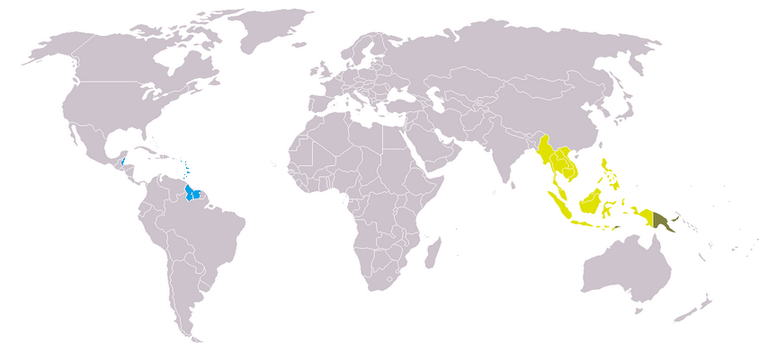A Télécoms Sans Frontières’ team recently returned from South East Asia after organizing a training course in emergency telecommunications for members of the ASEAN National Disaster Management Offices (NDMO) and the AHA centre, a TSF operational partner.
South-East Asia is one of the regions most at risk of being hit by natural disasters such as typhoons, tsunamis, or earthquakes. These disasters come fast, and even though we can see some of them coming a few days before, like typhoons, it doesn’t leave much time to prepare for the sheer destruction they bring.
One aspect they affect is telecommunications. When everything is destroyed, the Internet might be down and the telephone network impacted. Not only is this distressing for people trying to contact their family and friends, but it is life threatening for those trying to call for help, and can significantly hinder relief efforts. So how can these regions prepare to face these emergencies? What role can humanitarians play?

A Télécoms Sans Frontières’ team recently returned from South East Asia after organizing a training course in emergency telecommunications for members of the ASEAN National Disaster Management Offices (NDMO) and the AHA centre, a TSF operational partner.
South-East Asia is one of the regions most at risk of being hit by natural disasters such as typhoons, tsunamis, or earthquakes. These disasters come fast, and even though we can see some of them coming a few days before, like typhoons, it doesn’t leave much time to prepare for the sheer destruction they bring.
One aspect they affect is telecommunications. When everything is destroyed, the Internet might be down and the telephone network impacted. Not only is this distressing for people trying to contact their family and friends, but it is life threatening for those trying to call for help, and can significantly hinder relief efforts. So how can these regions prepare to face these emergencies? What role can humanitarians play?
The project, supported by the Internet Society Foundation, aims to build preparedness in the Caribbean and in South-East Asia. So far, TSF has covered 29 countries through 2 intergovernmental organizations, CDEMA and ASEAN.
Through a combination of theoretical and practical training, participants were given the opportunity to prepare for the possibility of a lack of communication after a natural disaster. With the right equipment and knowledge, this can help officials recover as quickly as possible when a disaster hits.
‘’In the field, when there is no communication nor data, telecoms become crucial for the coordination of the humanitarian response.’’
A participant
During the training, participants had to check for missing items before assembling the satellite kit. In emergency situations, it might severely hinder the response if something is missing and no one checked before. The participants faced unexpected requests and had to react quickly, adapt the equipment they had to the situation.
“This training really enhanced my capability, added-value and skills for me in providing different kinds of assistance. It is very interesting and educational, it will help me do my job better” Kim Austin A. Aspillaga, National Logistics Officer - AHA Centre
To cement the skills and knowledge gained, TSF will go back to South-East Asia for a second training. This is also the opportunity for NGOs and intergovernmental agencies to discuss strategic responses to emergencies, working in collaboration.

